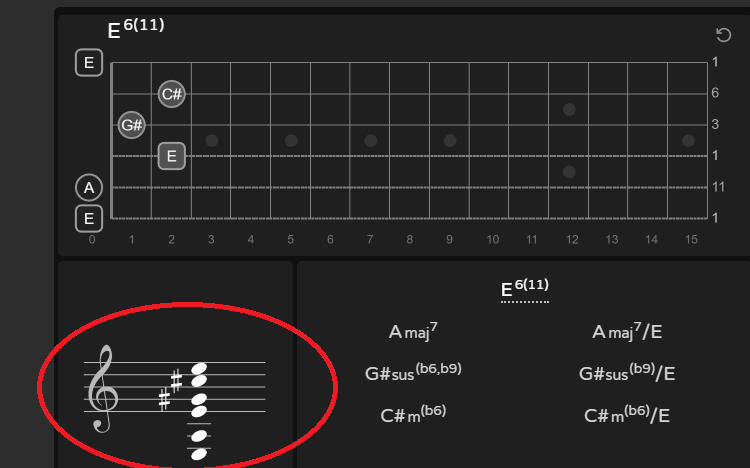Originally Posted by: faith83[p]Good question. You choose based on:My larger question is, how does one choose? There are seven different options for the same combination of strings -- are there rules of thumb for which to use in which situation?
1. The most efficient name, for conceptual clarity & perceptual ease.
2. The musical context.
I covered this in depth in this recent thread.
https://www.guitartricks.com/forum/thread.php?p=343341
So, some of my reply here is my standard replies copied & pasted from that & other threads. :)
Any group of notes can be called a variety of chord names by reference to any other musical alphabet letter.
1. Pick a root note. No, it doesn't even have to be one of the notes in the chord!
2. Identify the interval distance from the root note to each note in the chord.
3. Label each interval distance.
4. Build the chord name.
The most direct & precise way to indicate the chord you want played is in your original post.

If you want a specific voicing for a chord used, then just indicate it on standard notation. Then you don't even need to name it. :) Because if you just write Amaj7/E on a chord chart there are multiple ways to voice that on guitar. But it might be good enough to get the job done.
The best name for any chord is usually the most appropriate for the musical context. We use the name that helps us relate that chord to how it's being used.
So, for most purposes that's going to be Amajor7. It might help to indicate the E bass note. It depends on if there is a bass or piano already playing that bass note. If so, then it might not even matter if the guitar plays that low note, because the bass or piano is going to easily cover it. Or if all the instruments are going to be reading a chord chart instead of standard notation then it might help to indicate it.
Normally that kind of chord is a cadential 6/4 chord. A tonic with the 5th in the bass indicating motion to the V chord in some kind of cadence.
It could be a kind of E major (E6 add 4 or 11) if the preceding chord is an E major that uses the A note as a temporary ornamental motion from or to B. For example.
|--0---0---0-------------|
|--2---2---2-------------|
|--1---1---1-------------|
|--2---2---2-------------|
|--2---0---2-------------|
|--0---0---0-------------|
The G# or C# as root note options are much less likely with that particular voicing. It could be a C#minor add b6 if you voiced it more like this.
|--------------------------|
|--5---5---5-------------|
|--6---6---6-------------|
|--6---7---6-------------|
|--4---4---4-------------|
|--------------------------|
In general the best name for a chord it the clearest, most efficient name that indicates the musical context in which it is found.
Hope that helps!